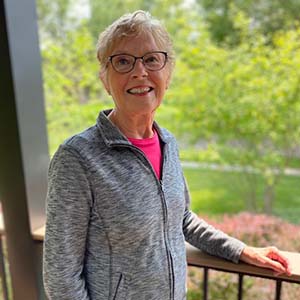
Developmental Milestones for Your Baby & Toddler: When to Relax and When to Seek Help
A child’s first words and first steps are memorable events – and most parents want their children to reach these and other developmental milestones ‘on time’ or to achieve them early. So it’s natural to be concerned if your little one isn’t, in your view, keeping up with these milestones. But how do you know if it’s time to truly worry?
Children don’t always meet milestones at the same time or at the age range expected. That’s okay! It’s not a big deal to miss one or two developmental milestones. These milestones should be looked at as a range for developing skills.
Preemies are a special case. Babies who are born prematurely usually will not meet milestones on time. As an example, if your baby was born two months early, he may reach four-month milestones at six months. We generally adjust milestones for premature babies until they reach age two.
That said, when children who are not preemies miss most of the milestones in their age range, it’s worth talking with your child’s doctor.
Here are some milestones and red flags that will help you know if and when to take action.
Two to Four Months Old
Motor Skills: Holding items in the hand. Pushing the upper body with support of the arms when he’s on his tummy. Pushing down on his legs when his feet are on the floor, like when he’s placed in a walker.
Cognitive Skills: Responding to voices. Following movement with his eyes and watching faces. Making some eye contact. He can give a social smile when he interacts with his caregivers.
Language Skills: He should gurgle and coo. There may be some different inflection in his vocalizations.
Red Flags: Not responding to loud noises, interacting with caregivers or visually following movement.
Six to Eight Months Old
Motor Skills: Sitting unsupported for short periods of time. Passing objects from one hand to another. Grasping at things with her whole hand. She can probably roll over.
Cognitive Skills: She has gotten better at watching things. Her eyes track side-to-side, up and down, and in circular motions. Reaching for things that are in her field of vision.
Language Skills: Responding to sounds by “talking” back. Turning toward sound sources. She may repeat syllables, like “ma-ma,” “da-da” or “ba-ba”. She’s interested in social play—a fan of peek-a-boo or pat-a-cake.
Red Flags: Stiff or tight muscles. Sloppy or ragdoll-like movement patterns. Showing no affection for caregivers. Eyes turning inward or outward. Not responding to sounds.
One Year Old
Motor Skills: Crawling. Pulling himself up to standing with the support of furniture. Taking steps with help or support. Ability to grasp finger foods. Using both hands together to pick things up. Pinching things, poking things. Shaking, banging, throwing and dropping toys. Waving and clapping.
Cognitive Skills: Imitates gestures. More engagement in social play. Extending an arm or leg to help get dressed. May show some anxiety with strangers.
Language Skills: Speaking more. Maybe using noises as names, like “mama” or “dada”. Responding to “no”. Understanding simple verbal requests
Red Flags: Dragging one side of the body while crawling. Inability to stand with support. No words. Not seeking out a caregiver when upset.
Toddlers
Motor Skills: Younger toddlers should be mobile and walking, perhaps pulling toys along. Fine motor skills like scribbling and stacking blocks.
Cognitive Skills: Identifying body parts. Pretending. Starting to categorize things.
Language Skills: Using pronouns (I, me, he, she, for example.) Naming colors and objects. Listening to short stories. Creating simple sentences.
Red Flags: Extreme clumsiness. Inability to sit still for long periods of time. Not walking yet. Oversensitivity to light, sound or movement.
Tracking Milestones and Treatment
- Many milestone checklists are available with a simple online search
- Make note as your child attains new skills
- Talk to your child’s doctor if multiple milestones are missed or you notice developmental red flags
If your child is missing milestones, your child’s doctor can evaluate his or her development and guide treatment as needed. Physical therapy can help with muscle tone, while occupational therapy can help your child develop fine motor skills. Speech therapy treats language development. If you are concerned about your child’s development, talk to your child’s doctor about potential needs for a therapy specialist.
More on Child Development
Want to learn more? Listen to a 10-minute podcast with Stacey Anderson, a pediatric occupational therapist at Bryan Health:

Stacey Anderson
Pediatric Occupational Therapist
Stacey Anderson is a Pediatric Occupational Therapist with Bryan Health!



































